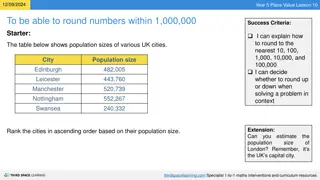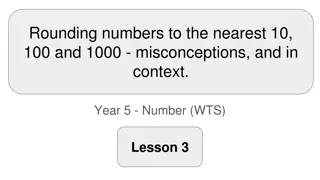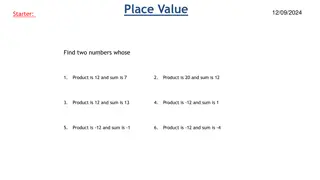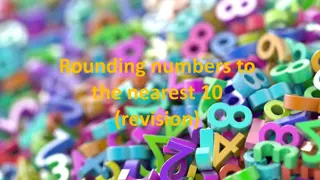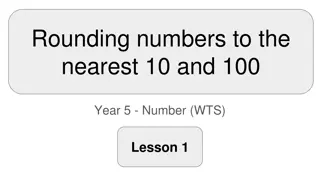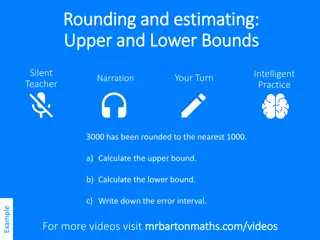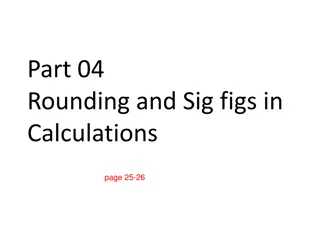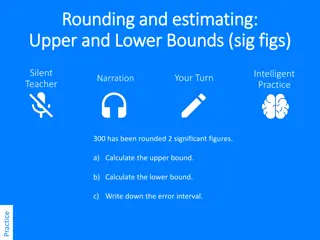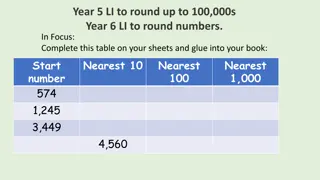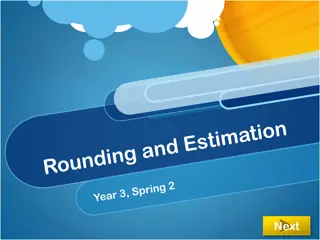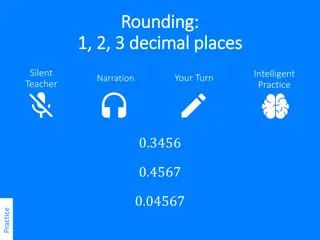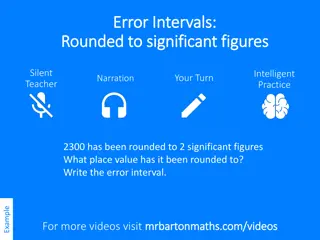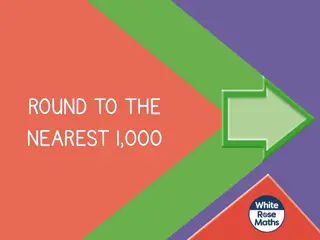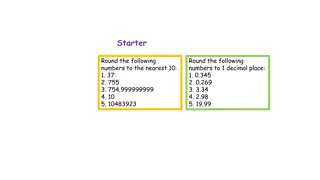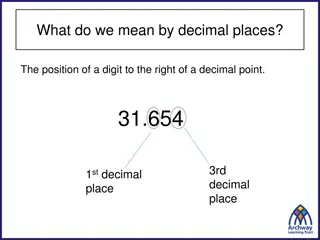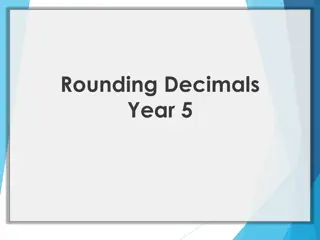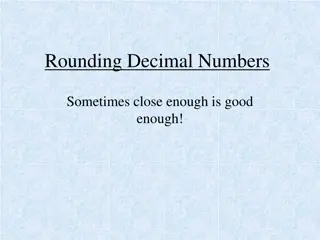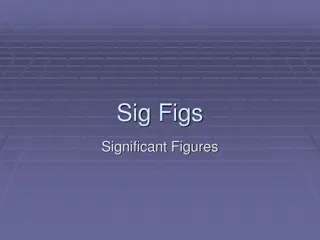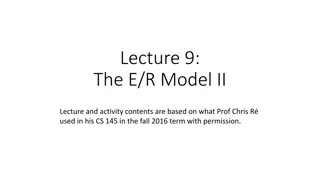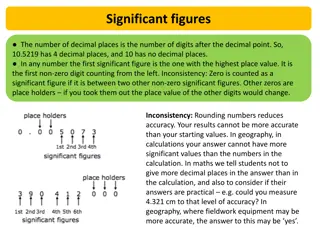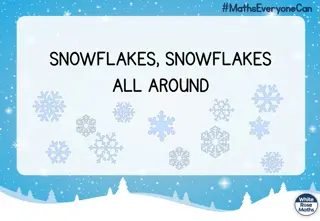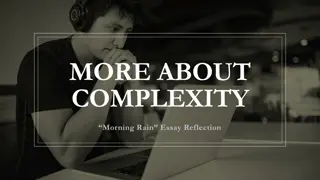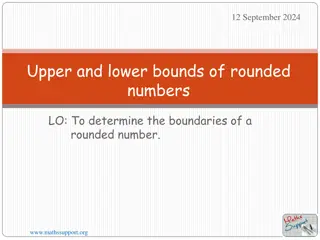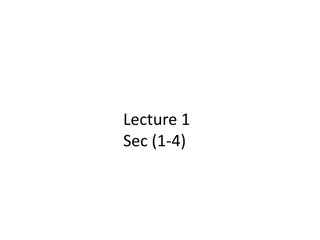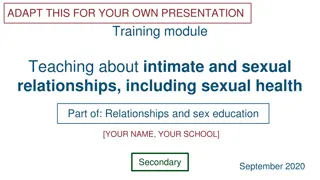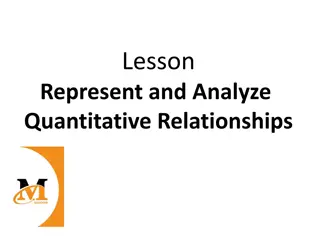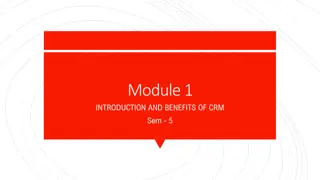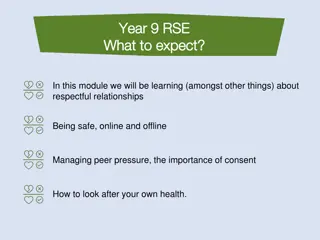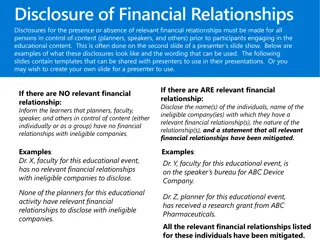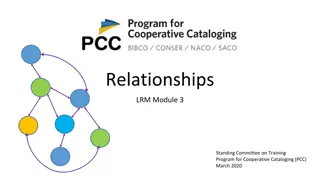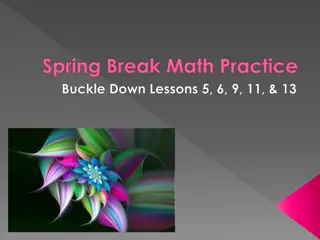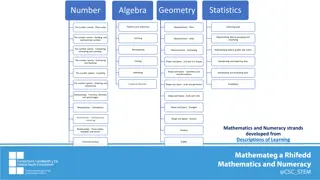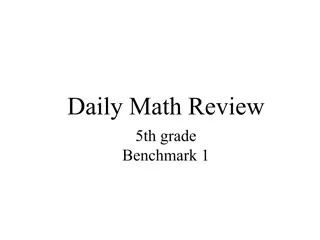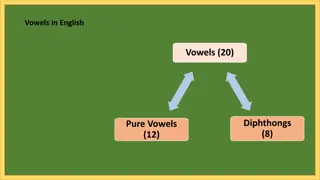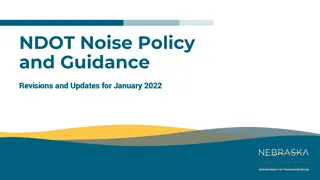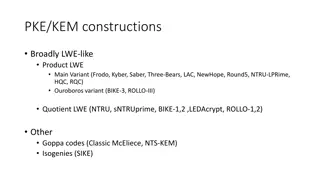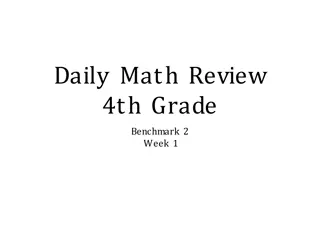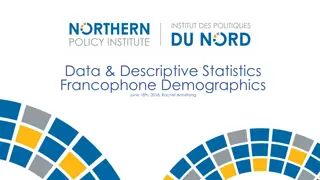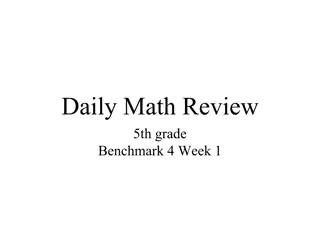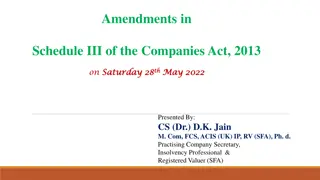Exploring Number Relationships and Rounding
The content delves into various number puzzles and rounding exercises. It discusses the effects of adding two to each number and their midpoints, as well as doubling each number. It also raises questions about differences in answers, relationships between questions, and understanding rounding to the nearest integer values. The visuals provided aid in visualizing these concepts.
Download Presentation

Please find below an Image/Link to download the presentation.
The content on the website is provided AS IS for your information and personal use only. It may not be sold, licensed, or shared on other websites without obtaining consent from the author. Download presentation by click this link. If you encounter any issues during the download, it is possible that the publisher has removed the file from their server.
E N D
Presentation Transcript
1) 2) 3) 4) 5) 6) 7) 8) 9)
If I add two to each number, I ll add two to their midpoint What about if I double each number? Why is there a difference of 1 in the answers to 2 and 3 even though one of the numbers has been decreased by 2? Why is the answer to question 3 itself a midpoint of the answers to questions 1 and 2? 1) 2) 3) How does question 4 relate to question 1? 4) 5) 6) 7) 8) 9) Why is the answer to number 8 -4.5 when the midpoint is 0.5 further on that 4? How do questions 7 and 8 relate to questions 5 and 6?? Do you think this question is easier than finding the midpoint of 3 and 6? If so, why? If not, why not?
0 1) 2 2) 1 3) 0 4) 4 5) -4 6) 7) 4.5 8) -4.5 -0.5 9)
A B C Each of these number lines could be described as the odd one out of the three. Why?
A B C Each of these number lines could be described as the odd one out of the three. Why? A is the only one that contains a zero label, showing what we d consider a times table B is the only one that doesn t have 15 intervals C is the only one that goes up in intervals of 0.15
3.3 1.9 2.4 -0.2 -0.5
1) Round 17 to the nearest 6. 15) A number has been rounded to 20 to the nearest 2) Round 17 to the nearest 8. 10. What are the integers values for this number? 3) Round 17 to the nearest 5. 16) A number has been rounded to 20 to the nearest 5. 4) Round 17 to the nearest 2. What are the integers values for this number? 17) A number has been rounded to 20 to the nearest 4. 5) Round 59 to the nearest 7. What are the integers values for this number? 6) Round 58 to the nearest 7. 18) A number has been rounded to 20 to the nearest 6. 7) Round 60 to the nearest 7. How do you know a mistake has been made? 8) Round 61 to the nearest 7. 9) Round 53 to the nearest 5. 19) A number has been rounded to 30 to the nearest 10) Round 53 to the nearest 11. 10 in base 4. 11) Round -7 to the nearest 3. a) What are the four integer values for the number? 12) Round -12 to the nearest 5. b) Rewrite the question and your answer to part a) in: 13) Round -3.987 to the nearest 5. i) base 10 ii) base 2 14) Round -3.987 to the nearest 8.
1) Round 17 to the nearest 6. 18 15, 16, 17, 18 15) A number has been rounded to 20 to the nearest 2) Round 17 to the nearest 8. 16 19, 20, 21, 22 10. What are the integers values for this number? 23, 24 3) Round 17 to the nearest 5. 15 16) A number has been rounded to 20 to the nearest 5. What are the integers values for this number? 18, 19, 20, 21 4) Round 17 to the nearest 2. 18 17) A number has been rounded to 20 to the nearest 4. 5) Round 59 to the nearest 7. 56 What are the integers values for this number? 18, 19, 20, 21 6) Round 58 to the nearest 7. 56 18) A number has been rounded to 20 to the nearest 6. 7) Round 60 to the nearest 7. 63 How do you know a mistake has been made? 8) Round 61 to the nearest 7. 63 20 is not a six as in 20 is not divisible by 6 9) Round 53 to the nearest 5. 55 19) A number has been rounded to 30 to the nearest 10) Round 53 to the nearest 11. 55 10 in base 4. 22, 23, 30, 31 11) Round -7 to the nearest 3. -6 a) What are the four integer values for the number? 12) Round -12 to the nearest 5. -10 b) Rewrite the question and your answer to part a) in: i) A number has been rounded to 12 to the nearest 4 in base 10 (10, 11, 12, 13) ii) A number has been rounded to 1100 to the nearest 100 in base 2 (1010, 1011, 1100, 1101) 13) Round -3.987 to the nearest 5. -5 i) base 10 ii) base 2 14) Round -3.987 to the nearest 8. 0
How does this change as we round 17 to different numbers? What would be a midpoint if I were rounding to the nearest 10? Nearest 100? Nearest 348? 1) Round 17 to the nearest 6. 2) Round 17 to the nearest 8. 3) Round 17 to the nearest 5. 4) Round 17 to the nearest 2. Why do both of these have the same question and answer even though they re rounding to different numbers? Write another pair of questions that do this. 5) Round 59 to the nearest 7. 6) Round 58 to the nearest 7. At which point did you recognise that you need to use the same number line for these questions? 7) Round 60 to the nearest 7. 8) Round 61 to the nearest 7. 9) Round 53 to the nearest 5. 10) Round 53 to the nearest 11. 11) Round -7 to the nearest 3. 12) Round -12 to the nearest 5. Did this question round up or down to zero? How does this compare to 3.987 to the nearest 8? Why does this happen? 13) Round -3.987 to the nearest 5. 14) Round -3.987 to the nearest 8. At which point did you recognise that you need to use the same number line for these questions?
15) A number has been rounded to 20 to the nearest Did you recognise that we d done this before when it was in amongst other questions? 10. What is the range of integer values for the How is it possible that these both have the same answer even though we re rounding the same number to different things? number? 16) A number has been rounded to 20 to the nearest 5. What is the range of integer values for the number? 17) A number has been rounded to 20 to the nearest 4. What is the range of integer values for the number? If we know this for rounding a number to the nearest 6, what would this means for rounding to the nearest 10? The nearest 100? The nearest 348? 18) A number has been rounded to 20 to the nearest 6. There s nothing special about this question, I just really really like it. Can you write another one that s similar? How do you know a mistake has been made? 19) A number has been rounded to 30 to the nearest 10 in base 4. a) What are the four integer values for the number? b) Rewrite the question and your answer to part a) in: i) base 10 ii) base 2


